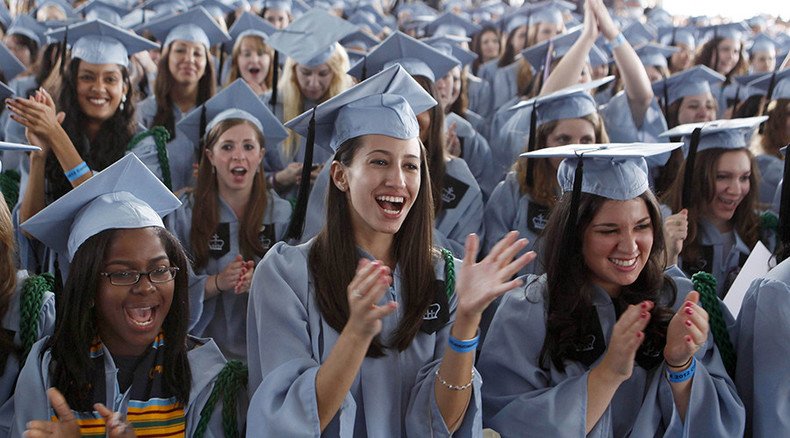American women crashing with Mom & Dad like it's 1940 - report

Over a third of America’s young women live at home with their parents or relatives – a percentage not seen since 1940 – as more millennial women put off marriage, attend college, and face high living expenses, according to Pew Research Center.
Analysis of data from the US Census Bureau showed 36.4 percent of young women aged 19-34 living with parents or relatives, compared to 36.2 percent in 1940.
The number of young men living with their parents is also on the rise. Pew discovered that 42.8 percent of young men are currently staying with family or relatives, compared to 47.5 percent in 1940. Pew said the results showed a striking U-turn, “indicating a return to the past, statistically speaking.”
36.4% of women ages 18-34 lived w/ family in 2014-- a percentage not seen since 1940 https://t.co/D0YRpDjKpkpic.twitter.com/YBXiFPPwDJ
— Urban Institute (@urbaninstitute) November 11, 2015Statistically, the number of stay-at-home daughters started dropping after the 1940s, and by the 1960s just 24 percent of young women were living with mom and dad. The numbers then started to go up again slowly until 2000, followed by a steady increase coinciding with the Great Recession in 2008.
The labor market might have recovered, but other forces are also playing a role, such as increasing student debt, higher living costs and economic uncertainty.
Casey Ballard, 29, was living in Portland, Oregon, but rent ate up roughly two-thirds of her paycheck and she was ready for a career change. She moved back with family in California to try out teaching as a substitute.
“There was that element of frustration and feeling like a failure,” she told AP about returning home. “But then the logical side of me kicked in and said ‘It’s just fiscally responsible.’”
A new normal? @pewresearch finds more young woman living at home than they have since WWII. https://t.co/1lg9CIZSDBpic.twitter.com/GBm54xVZCy
— News in Brief (@newsinbrief) November 12, 2015And while statistically it might look like a return to the 1940s, Pew said there were some major differences.
“Today’s young women are more likely to be college-educated and unmarried than earlier generations of American women in their age group,” the report noted.
Pew found today’s young women were only half as likely to get married as their counterparts in the 1940s. Census data also showed that for young women in 2014, their first marriage tends to be at age 27, whereas in the 1940s it was by age 21. Men are also marrying later, typically at 29, whereas in the 1940s they were 24 years old on average.
Great Minds: Rev. Barry W. Lynn - Millennials Are Better On Evolution http://t.co/WQSIQb7nQn@RT_America#TheBigPicture
— Thom Hartmann (@Thom_Hartmann) August 3, 2015College students enrolled part-time or at community college were more likely to live at home, Pew found, with 45 percent living at home in 2014 compared to 33 percent of young women not in college.
Previously, women lived with their parents until they married and only a small share attended college. In the 1960s, only 5 percent of young women were college students, compared to 27 percent of young women today.












